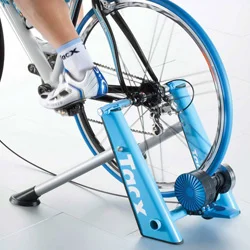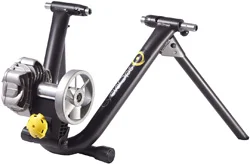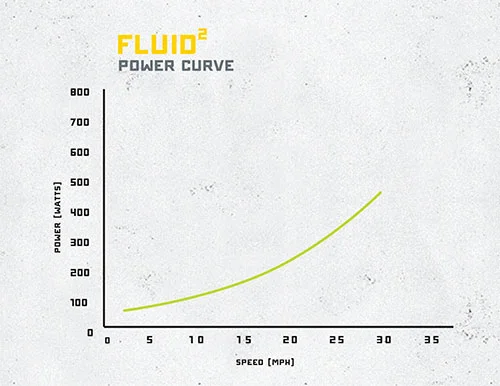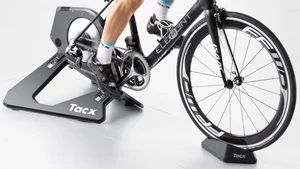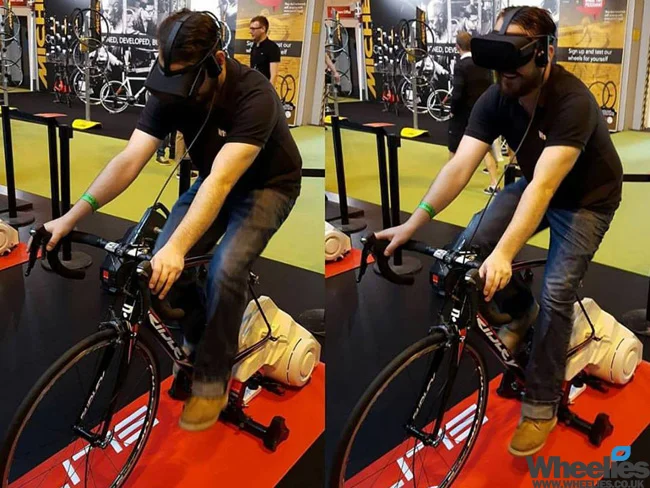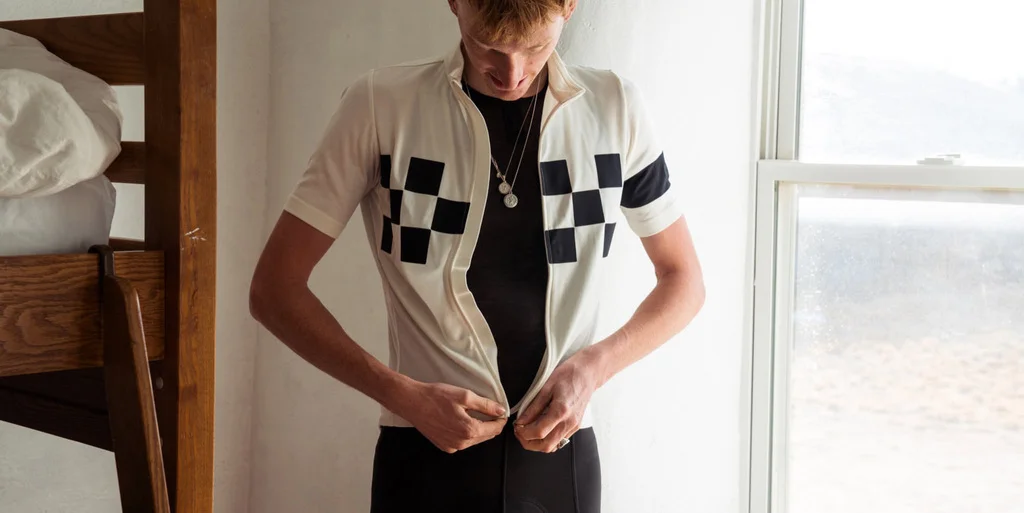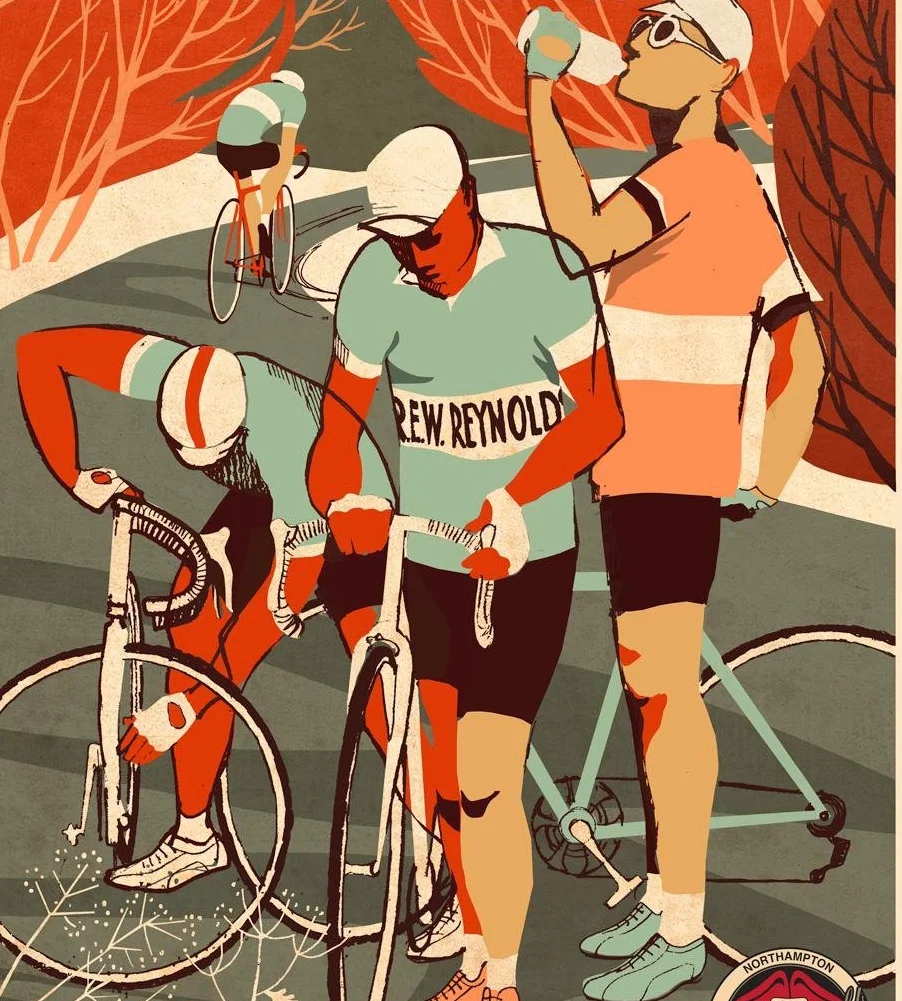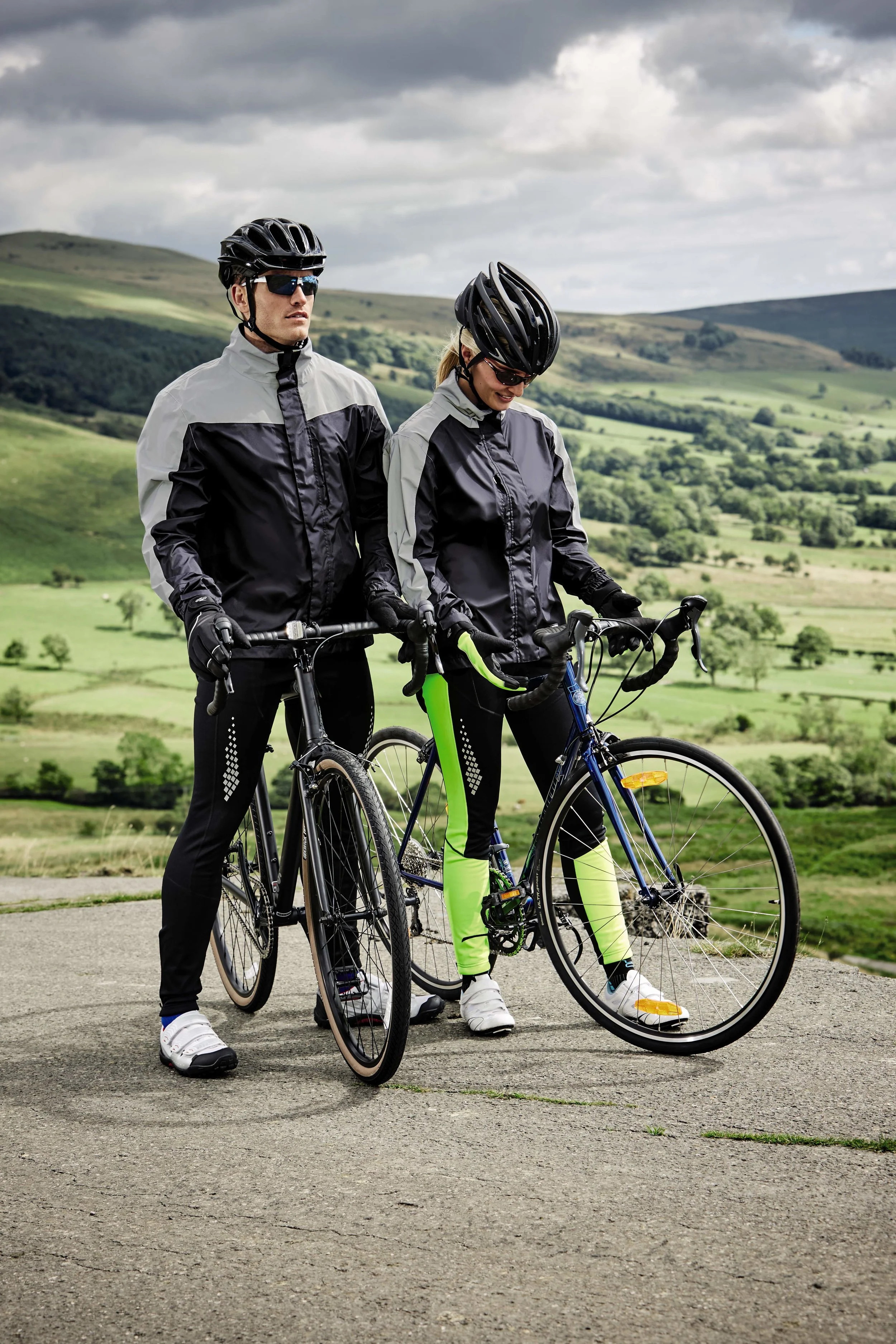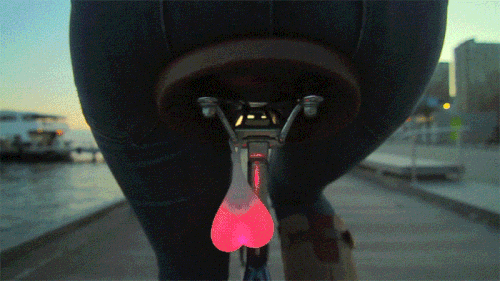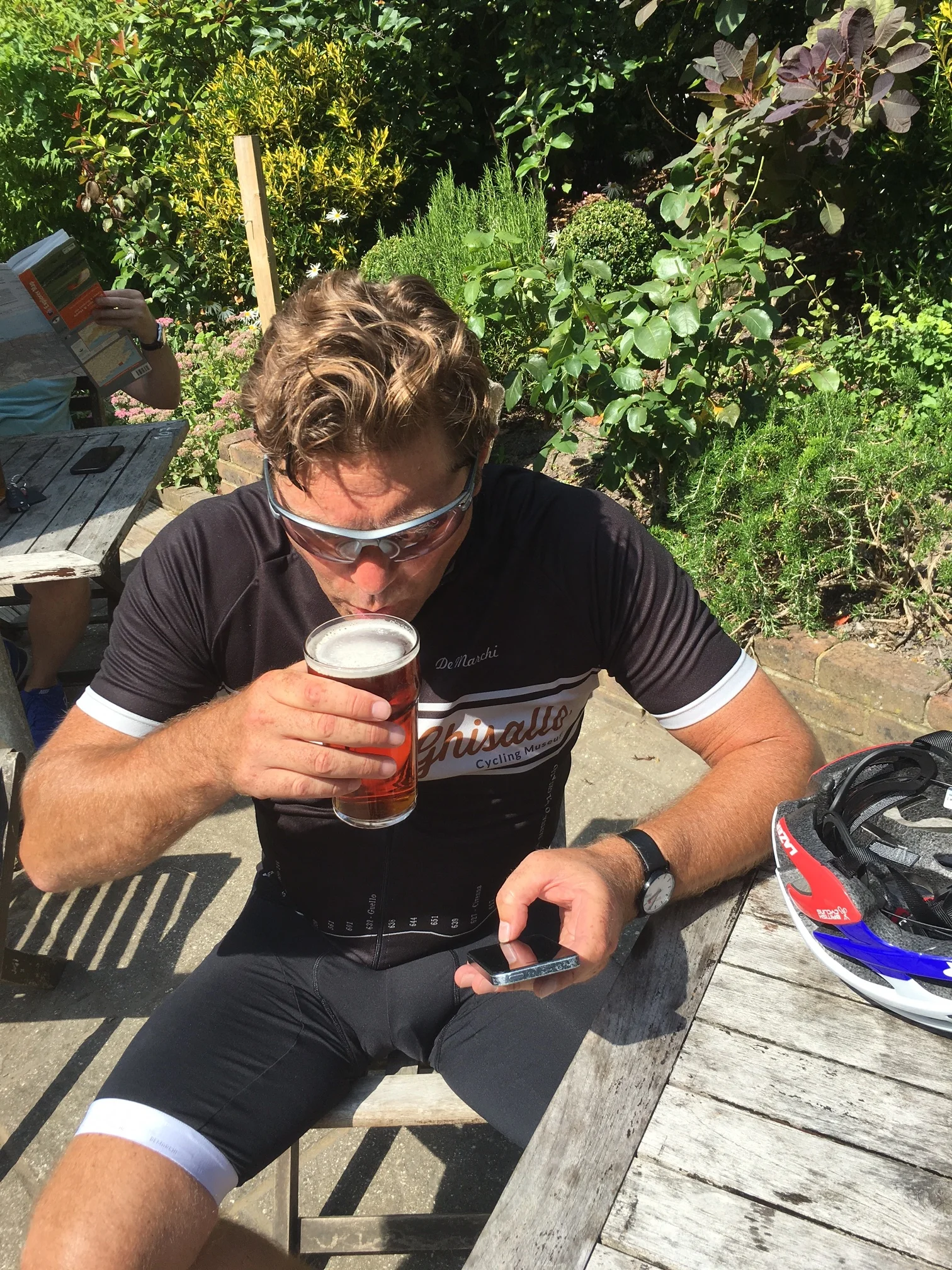Winter miles make summer smiles, as the cycling saying goes. But as post-Christmas apathy sets in, along with an expanding waistline, motivation wanes. Adding bad weather and shorter days into the mix, getting out on the bike becomes less and less attractive. 'Tis the season of the turbo trainer...
Winter cycling can be tough going - photo courtesy of averagejoecyclist.com
What is a turbo trainer?
A turbo trainer lets you bring your bike indoors and ride your bike from the comfort of your front room or garage. Leaving your front wheel attached, the rear of the bike is mounted in the stand, then just tighten down the roller, and start pedalling! As you pedal, the trainer provides resistance to the wheel, which gives you a workout. Turbo trainers are great as a year-round training tool, but it’s during the autumn & winter months that their benefits really shine through.
Turbo trainers can be used with all types of bike. Many modern trainers will accept wide mountain bike tyres as well as narrow road tyres, so whatever you ride, you can keep training on the bike you would normally be riding outdoors.
Types of turbo trainer
The biggest difference between turbo trainers comes from the resistance unit:
Wind turbo trainers
Simple, inexpensive and effective. Wind/air turbo trainers have a fan directly connected to the roller which is driven by your rear wheel. The faster you pedal, the faster the fan spins and the more resistance it gives. There’s no need for a manual resistance control like you find on a magnetic turbo trainer; just change into a higher gear and the resistance will increase with wheel speed.
Turbo trainers are renowned for making a bit of a noise. Unsurprisingly, because they generate resistance entirely by pumping air, wind trainers are the noisiest type of turbo trainer system. Nevertheless, they’re affordable enough even for the occasional fitness trainer, and are built into compact stands which can be folded or partially disassembled for convenient storage.
Wind trainers also typically provide a lower resistance than other types of trainer, so they are better suited to beginner fitness cyclists, or riders simply aiming to be a bit more active between rides.
Magnetic turbo trainers
As the name suggests, magnetic turbo trainers use a series of magnets to resist the rotation of the rear wheel. Although some expensive models are automatic, magnet trainers are usually adjusted via a remote lever which you can clip onto the handlebar; turning the lever moves the magnets closer or further away from each other, so you can change your resistance level on the fly.
Magnetic turbo trainers are a lot quieter than wind trainers, however they are more expensive. They’re capable of providing greater resistance than wind trainers too, making them more suitable for amateur racers and enthusiasts. As with wind trainers, most magnetic turbo trainers can be compactly stored away when not in use.
Fluid turbo trainers
Instead of spinning a fan in the air, a fluid turbo trainer generates resistance by spinning a propeller (or an impeller) inside an enclosure filled with oil. The beauty of this system is that, by manipulating the properties of the oil, manufacturers can tune fluid trainers to have a progressive increase in resistance.
Take a look at the chart below which shows how the resistance of the CycleOps Fluid 2 turbo trainer increases with speed. This much more closely resembles what riding a bike is like in the real world – the faster you go, the more wind resistance you encounter and the harder you have to pedal. Just like wind trainers, to increase the resistance level you simply need to pedal faster.
Fluid trainers can generate quite a lot of resistance, so they’re perfect for racers and serious fitness fanatics. They are among the quietest turbo trainers available, although some have additional cooling fans to stop the oil overheating which do make a bit of noise. They’re usually also more expensive than wind or magnetic trainers. Once again, this type of trainer can be neatly packed up and tucked away when you’re finished with it.
Direct Drive turbo trainers
Clever. Quiet. Realistic. Direct drive turbo trainers appear towards the upper end of the price range, so you can expect the best performance from them. Inside, the mechanism is typically either a fluid or magnetic driven resistance, however, high spec machines like the CycleOps Silencer Direct Drive Mag uses fast-reacting electromagnets to provide resistance at an impressively quiet 59dB.
Other great benefits of direct drive turbo trainer are that you won’t wear out your rear tyre as you power through the miles, plus you’re less likely to scratch your bike while mounting & un-mounting it from the frame. They’re capable of very high resistance ratings, which is essential for professional racers.
Virtual Reality and Smart turbo trainers
The ultimate indoor cycle training kit you can buy. With an ANT+ and Bluetooth equipped smart trainer, you can hook it up to your computer and train amongst a cycling community online and experience virtual & real-world cycling routes right in your front room. Smart trainers aren’t as expensive as you might think either, with the Elite Qubo Power Mag Smart B Plus priced at £180.40.
On higher end models, the resistance level can be set to increase or decrease automatically as your route takes you up and down hills, so you can climb Mont Ventoux without needing a passport. Depending on the model, smart trainers can also record your (wheel) speed, cadence, power output, heart rate (and so on) using a bundled app for your phone/tablet, so rather than relying on gut instinct and ‘feel’ to gauge your training improvement, you can measure it directly every time you ride.
Now kids can get in on the action with a Fisher-Price turbo trainer!
Later this year, toy manufacturer Fisher-Price is launching the Think & Learn Smart Cycle, an exercise bike with a tablet holder attached to the handlebar. The bike, aimed at 3 to 6 year olds, lets kids interact with gaming apps while pedalling. It comes with its own educational app and is Bluetooth-enabled so the bike could work with other apps played on a tablet or TV. App dashboards tell parents how much time their child has spent pedalling and what he or she has learned while they've been riding!
What else do I need to start using a turbo trainer?
Riding indoors on your turbo trainer delivers a very similar workout to riding outdoors, however there are a few differences which it helps to prepare for. Keeping the bike level, protecting it from sweat and keeping yourself cool are just some of the things you might want to think about.
Cassette, wheel & tyre
It’s not uncommon for turbo trainer users to have a 2nd rear wheel which they use specially for turbo training, complete with a cassette and a turbo trainer specific tyre like the Schwalbe Insider. A trainer specific tyre has a lower rolling resistance than a regular tyre, and is better suited to the grip 7 abrasion characteristics of a metal roller. Rather than having to change your rear tyre every time the bike comes inside, it’s a lot easier to use a cheap 2nd wheel and a cassette.
Direct drive turbo trainers don’t need a special tyre, but quite often they will be supplied without a cassette. Ideally, it’s best to use a cassette with matching gear ratios to the one you normally use on the bike, as this gives a better representation of the gear ratio performance you’ll have when you ride outdoors.
Riser blocks
By lifting your back wheel off the ground and onto the roller, your bike is pitched forwards and can feel a little uncomfortable to ride. Riser blocks go under the front wheel and help level-out the bike again to give you a more natural feeling riding position. They also give the wheel extra lateral support and help keep the steering in place while you pedal. Some turbo trainers come supplied with a riser block, while others come without.
When you ride outdoors, the wind helps your sweat evaporate away from your skin, keeping you nice and cool. However, whilst cycling indoors on a turbo trainer, sweat will quickly bead up and start dripping onto your bike and the floor even if you set up some fans to help cool you down. The salt content in your sweat will quickly start corroding your paint work and particularly your drivetrain & exposed bolt heads. Putting a sweat cover on your bike catches those drops and protects it from corrosion.
A training mat not only protects your floor from sweat droplets, it helps prevent your bike/riser block and trainer from sliding around and reduces the vibrations being transferred into the floor
Cooling fans
As mentioned, it would be wise to set up some cooling fans around you, and open some doors and windows to let the air flow through the room you’re riding in. It’s not essential, but it will leave you feeling more comfortable on the bike, so you can pedal for longer and get more out of your workout.
Alternatively, if you decide none of that kit's for you, you could just channel the Velominati's #Rule 5 and 'toughen the f*** up'!

































